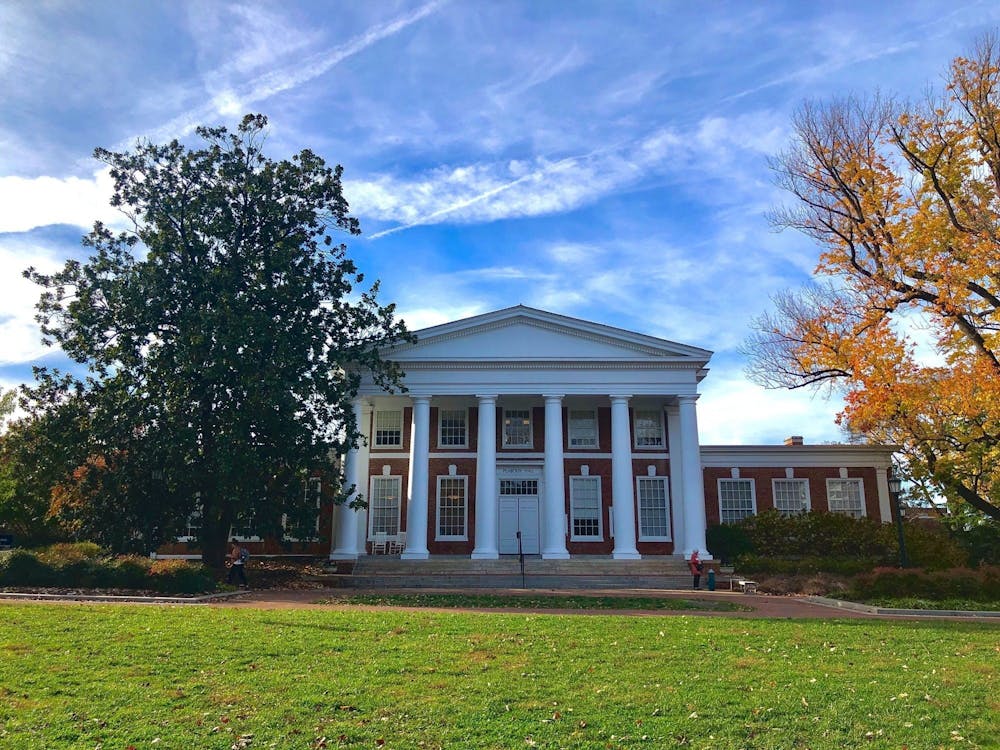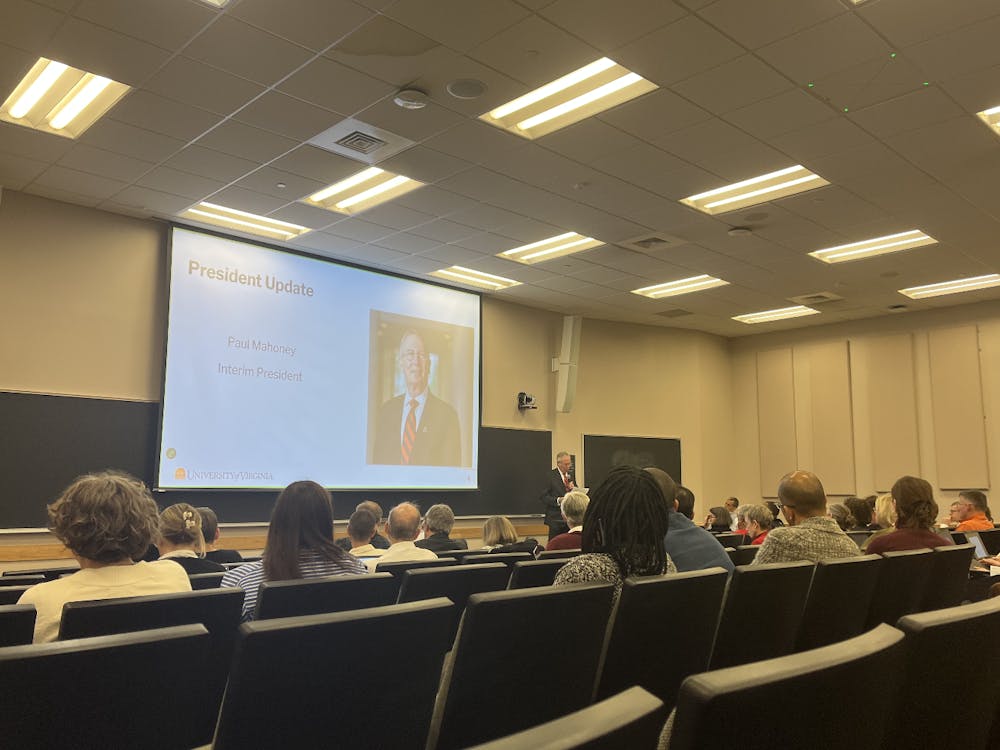The Office of Undergraduate Admissions extended 9,522 offers for the Class of 2026 Friday evening, accepting a record-low 19 percent of applicants.
Out of the 50,962 total applications submitted through early action, early decision and regular decision rounds this year, 32 percent applied during the regular decision cycle, while 61 percent came from the early action cycle and 7 percent applied during the early decision cycle. Last year, the University extended offers to 9,898 students, a 20.6 percent acceptance rate.
Of offers to students that applied domestically this year and who indicated a race on their application, 52 percent of offers were made to students of color — a record percentage for the University. Last year, 41 percent of accepted students were applicants of color.
In an interview with The Cavalier Daily, Dean of Admissions Gregory Roberts said he is excited to welcome in the new diverse class of students, but recognizes that for some, the process ended in disappointment.
“While we can't make everybody happy with every decision, we want to make sure that when they finish this process, they feel like they are cared for,” Roberts said. “We're excited for the admitted students, we're eager to welcome them here. And we're also thinking about the students that we're unable to admit and sending them our best wishes too.”
Out of students given admission offers for the Class of 2026, 6,243 were accepted in February after submitting early action applications, while 1,120 were accepted in December through binding early decision applications, meaning they are required to enroll upon acceptance. Early action and early decision applications were both due Nov. 1.
The ongoing COVID-19 pandemic has had lingering effects on this year’s application cycle, most notably with the continuance of some virtual recruiting and test optional policies.
The submission of standardized test scores was made optional for this year’s application cycle, something the University later announced would continue through at least 2023. In total, 42 percent of applicants opted to not submit standardized test scores, and 26 percent of the offers were given to students who chose to not submit standardized test scores.
Roberts said that the University saw more students submit test scores this year than last year, something that did not surprise him given that COVID-19 restrictions were less tight during this application cycle. Roberts added that the University is still weighing its test-optional policy for the future, with a decision expected within the next year.
“To be honest, it hasn't dramatically impacted how we assess a file,” Roberts said. “I think that people probably assumed the tests were more important than they ever were in the first place.” He added that there are patterns in who submits test scores, with first-generation students submitting test scores at a lower rate than legacy students, for example.
Admissions gave students the chance to write about how the pandemic affected them and their family. Roberts said that one way he thinks the pandemic might have had a significant effect was the quality of recommendation letters from large public schools, something they considered when reading applications.
“A guidance counselor who has 200 students under there that work with them, it's hard in the first place for that individual to write a meaningful recommendation about students,” Roberts said. “Now, it's 10 times as difficult because they don't know them, or at least they just met them in the fall.”
Per data provided by Roberts, the University extended 1,460 offers — 15 percent of total offers — to students who will be the first in their families to attend college. Last year, 1,162 of those accepted — 12.5 percent — were first-generation college students.
This year, 962 offers, or 10 percent, were extended to legacy students, meaning that one or more of their relatives attended the University — nearly identical to last year’s 1,005 accepted legacy students.
This year, 3,946 Virginians were accepted — making up 41 percent of total offers. Of all Virginians who applied, 28 percent were accepted, the same from last year. The University aims to maintain a two-thirds majority of Virginia residents in its student population as a public university.
When it comes to out-of-staters, 5,576 applicants received offers, making for an acceptance rate of 15 percent, down two percent from last year.
Forty-four percent of accepted students identified as male, while 56 percent identified as female.
The College of Arts and Sciences and the School of Engineering and Applied Science both accepted fewer students than they did in 2021, while the School of Education and Human Development and the School of Nursing accepted more students than they did the previous year.
This year, the College accepted 7,038 applicants and Engineering accepted 1,969 applicants, while last year the schools accepted 7,207 applicants and 2,230 applicants, respectively.
The School of Architecture accepted 230 applicants, identical to the 230 accepted last year. The School of Education accepted 104 applicants, 15 more than last year, and Nursing accepted 169 applicants, 29 more than last year.
Of the students accepted, 13.5 percent are African American — up from 9 percent last year. The number of Asian and Hispanic students also went up, with 19 percent of offers going to Asian students compared to 18 percent last year and 10 percent of offers going to Hispanic students compared to eight percent last year.
A greater number of Native American students were given offers as well, with 113 students receiving offers — up from 85 percent last year.
Additionally, seven percent of offers were given to foreign national students, and about six percent of applicants didn’t list a race.
Roberts said that a growingly diverse student body is an intentional shift that has occurred gradually over time.
This year, admissions focused on recruiting efforts in-state with QuestBridge — a national nonprofit that works to connect low-income youth with leading colleges — rather than largely out-of-state. There were also in-person open houses for first-generation students, Black students, transfer students and Hispanic students.
“We've invested a lot in trying to reach as many different types of students as possible,” Roberts said. “And we will continue to do that. I think it showed in the applicant pool, which was larger and particularly in those populations, which allowed us to make more offers.”
Roberts added that the University is continuing to look to enroll more low-income students, and they have their eyes on a particular metric to do so.
“We're particularly interested in enrolling more students who are eligible for Pell Grants, because that's a proxy in some ways for income. And I think U.Va., historically, is lower in terms of Pell Grant representation,” Roberts said.
A Pell Grant is a form of need-based financial aid given to undergraduate students by the U.S. Department of Education. Students can apply for grants by completing the Free Application for Federal Student Aid, commonly known as FAFSA.
The University will hold its annual Days on the Lawn — an event series that allows admitted students to learn more about the University before making their decision — this year in-person in April, for the first time since the pandemic began, as well as virtually. Virtual Days on the Lawn events were held for early action and early decision students in February.
Students have until May 1 to accept admission offers.
CORRECTION: A previous version of this article stated that the University accepted 1,184 first-generation college students and that nine percent of offers were extended to foreign national applicants. The correct numbers are 1,460 first-generation offers and nine percent of foreign national applicants. The article has been updated to reflect the correct data points.







